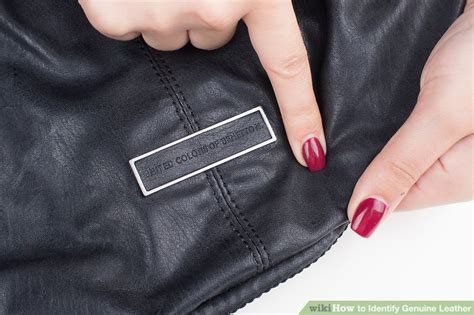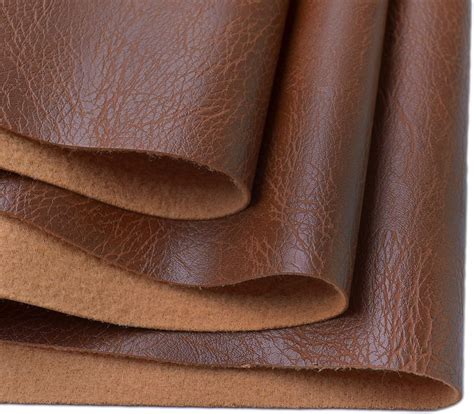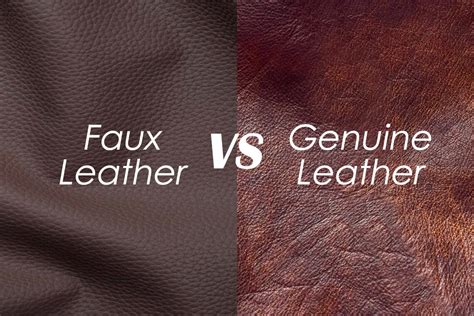fake vs real leather shoes | how strong is faux leather fake vs real leather shoes Feel and smell the leather, too. Real leather is soft with an imperfect grain and smells earthy or natural. Fake leather is cold, uniform-looking, and smells plasticky. Genuine leather also absorbs water while water just sits on top of faux leather.
The European Consumer Center (ECC Latvia) has been established with the aim of ensuring the observance of consumer protection when purchasing goods or services in one of the EU Member States, as well as in Norway and Iceland. News. 26.03.2024. European Commission Wants to Improve Rights for Travellers. 15.03.2024.
0 · how to identify genuine leather
1 · how strong is faux leather
2 · genuine vs real leather
3 · genuine leather vs bonded
4 · genuine leather vs
5 · genuine leather symbol
6 · genuine leather is real
7 · does genuine leather mean real
Etena Fou Efkas Las Vegas/UCC. Las Vegas NV. 89101. Facebook. Twitter. E-Mail. Telegram. QR code. Find a United Church of Christ church near me. Who we are. Etena Fou Efkas Las Vegas/UCC is a United Church of Christ church in Las Vegas, Nevada.

how to identify genuine leather
Here’s how to be sure you’re getting real leather and not some fancy faux nonsense: Real vs. Fake Leather 1. Check the label. Real leather: It seems obvious, but look at the tag or label. If you're in the market for a new pair of shoes or boots, you've probably come across the age-old debate of faux leather vs real leather. Should you go for the sustainable and affordable faux leather option or splurge on the . Real leather often has a rough, suede-like backing, while fake leather has a cloth or synthetic base. Additionally, many manufacturers include tags or labels indicating whether . Knowing the key differences between leather types has never been more important. From its composition to its environmental impact, we’ll break down everything you need to know about faux leather. We’ll compare it to real .
Real leather is a more hearty and flexible material. When folded, it should return to its natural shape. Fake leather, on the other hand, is likely to be thin, stiff, and have more of a plastic or cardboard feel to it. When folded, it is likely to create a temporary wrinkle or . Feel and smell the leather, too. Real leather is soft with an imperfect grain and smells earthy or natural. Fake leather is cold, uniform-looking, and smells plasticky. Genuine leather also absorbs water while water just sits on top of faux leather.Here’s how to be sure you’re getting real leather and not some fancy faux nonsense: Real vs. Fake Leather 1. Check the label. Real leather: It seems obvious, but look at the tag or label.
If you're in the market for a new pair of shoes or boots, you've probably come across the age-old debate of faux leather vs real leather. Should you go for the sustainable and affordable faux leather option or splurge on the timeless elegance of genuine leather types of . Real leather often has a rough, suede-like backing, while fake leather has a cloth or synthetic base. Additionally, many manufacturers include tags or labels indicating whether the material is genuine or synthetic—check these to confirm the material. Knowing the key differences between leather types has never been more important. From its composition to its environmental impact, we’ll break down everything you need to know about faux leather. We’ll compare it to real leather, explore its pros and cons, and help you make an informed choice. Real leather is made from animal skins and hides, whereas faux leather doesn’t come from animals. Faux leather is made of a plastic layer/material (like polyurethane, or PVC) adhered or applied to a fabric backing material, such as .
Yes. They are leather, but heavily coated. Fake or synthetic materials just depress under your finger but retain their shape, firmness, and texture. If you can get a glimpse at the back of the leather, you may be able to determine if it's fake (or not). You can make sure yours are real by following the tips below. Here’s how to spot fake Dr. Martens and identify genuine ones: Step 1: Verifying Authenticity – Inspect the Shoebox. Real Dr. Martens will come in a sturdy cardboard box with a . If you look closely at, for example, a leather pencil case, you can often spot fake leather or a machine made piece. Real grain leather has natural imperfections, rough edges, and a unique texture. Fake leather, on the other hand, typically has a more consistent pattern, perfect edges, and a more uniform texture.
Real leather is a more hearty and flexible material. When folded, it should return to its natural shape. Fake leather, on the other hand, is likely to be thin, stiff, and have more of a plastic or cardboard feel to it. When folded, it is likely to create a temporary wrinkle or . Feel and smell the leather, too. Real leather is soft with an imperfect grain and smells earthy or natural. Fake leather is cold, uniform-looking, and smells plasticky. Genuine leather also absorbs water while water just sits on top of faux leather.
Here’s how to be sure you’re getting real leather and not some fancy faux nonsense: Real vs. Fake Leather 1. Check the label. Real leather: It seems obvious, but look at the tag or label.
If you're in the market for a new pair of shoes or boots, you've probably come across the age-old debate of faux leather vs real leather. Should you go for the sustainable and affordable faux leather option or splurge on the timeless elegance of genuine leather types of .

Real leather often has a rough, suede-like backing, while fake leather has a cloth or synthetic base. Additionally, many manufacturers include tags or labels indicating whether the material is genuine or synthetic—check these to confirm the material.
Knowing the key differences between leather types has never been more important. From its composition to its environmental impact, we’ll break down everything you need to know about faux leather. We’ll compare it to real leather, explore its pros and cons, and help you make an informed choice. Real leather is made from animal skins and hides, whereas faux leather doesn’t come from animals. Faux leather is made of a plastic layer/material (like polyurethane, or PVC) adhered or applied to a fabric backing material, such as .Yes. They are leather, but heavily coated. Fake or synthetic materials just depress under your finger but retain their shape, firmness, and texture. If you can get a glimpse at the back of the leather, you may be able to determine if it's fake (or not). You can make sure yours are real by following the tips below. Here’s how to spot fake Dr. Martens and identify genuine ones: Step 1: Verifying Authenticity – Inspect the Shoebox. Real Dr. Martens will come in a sturdy cardboard box with a .
how strong is faux leather

miu miu speisekarte pdf
Version 1 of the Eureka Pagos Locations Map is complete, featuring locations of NMs, monsters, elementals, sleeping dragons, spawn conditions, mutation/adaptations, and cliffs/passages. This map would not be possible without contributions from the community and the Eurekan Explorers Discord .
fake vs real leather shoes|how strong is faux leather


























